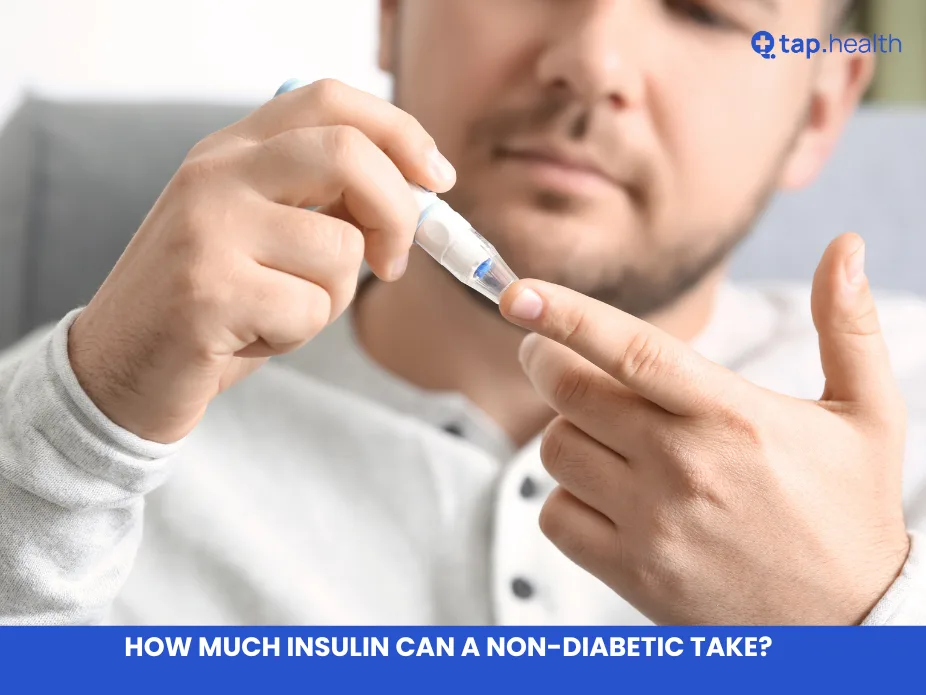Diabetes is a condition that requires careful monitoring of blood sugar levels to ensure proper health management. Unfortunately, there are times when a diabetic patient may become unresponsive, which can be a sign of hypoglycemia (low blood sugar) or hyperglycemia (high blood sugar), both of which are medical emergencies. If you find yourself in this situation, it’s important to act quickly and properly.
In this blog post, we will explore how to assess an unresponsive diabetic patient, the steps you should take, and how to determine whether the issue is related to low or high blood sugar. We’ll also go over real-life scenarios, share expert advice, and provide recommendations to help you understand how to respond in emergencies involving diabetic patients.
Understanding the Importance of Assessing Unresponsiveness
When a diabetic patient becomes unresponsive, it is critical to act swiftly, as their condition can deteriorate rapidly. The main goal of assessment in such situations is to determine whether the unresponsiveness is related to a low blood sugar (hypoglycemia) or high blood sugar (hyperglycemia) episode.
In either case, prompt intervention is necessary. For example, if a person’s blood sugar drops too low (hypoglycemia), they can lose consciousness, experience seizures, or go into a diabetic coma if not treated. On the other hand, if blood sugar becomes too high (hyperglycemia), it can also lead to serious complications, including diabetic ketoacidosis (DKA), which requires emergency care.
Thus, when assessing an unresponsive diabetic patient, it’s important to:
- Quickly evaluate their symptoms.
- Determine the cause of unresponsiveness.
- Act immediately based on whether they are experiencing hypoglycemia or hyperglycemia.
Steps to Take When Assessing an Unresponsive Diabetic Patient
1. Ensure the Patient’s Safety
First and foremost, make sure the person is in a safe position. If possible, gently lay the patient down on their side to prevent any injuries or complications like choking. Make sure they are away from any sharp objects or furniture that could harm them in case they move suddenly.
2. Check for Breathing and Pulse
Before proceeding, it’s essential to check if the person is breathing and has a pulse. Look for the rise and fall of the chest, and check for a pulse by placing two fingers on the wrist. If they are not breathing, or if you can’t feel a pulse, immediately call emergency services (dial 112 or 911) and begin CPR if trained to do so.
If they are breathing and have a pulse, proceed to the next steps to determine the cause of their unresponsiveness.
3. Look for Signs of Low Blood Sugar (Hypoglycemia)
Hypoglycemia can cause a diabetic patient to become unresponsive or unconscious. Some common signs of low blood sugar to look for include:
- Sweating.
- Shakiness.
- Rapid heartbeat.
- Confusion or irritability before the unresponsiveness.
If the patient is sweating and feels clammy, it’s likely they are experiencing hypoglycemia. If you suspect hypoglycemia, the next step is to treat it quickly.
4. Treating Hypoglycemia
If the patient is conscious and able to swallow, give them a fast-acting carbohydrate to raise their blood sugar quickly. This could be:
- Glucose tablets.
- Fruit juice or regular soda (not diet soda).
- Honey or sugar (1-2 teaspoons).
If the patient is unconscious or unable to swallow, do not attempt to give them food or liquid. In this case, it is best to administer glucagon (a hormone that helps raise blood sugar) if you have it available, or seek immediate medical attention.
5. Look for Signs of High Blood Sugar (Hyperglycemia)
On the other hand, high blood sugar (hyperglycemia) can also cause unresponsiveness, though it usually develops more gradually. Common signs of hyperglycemia include:
- Frequent urination.
- Increased thirst.
- Fatigue or drowsiness.
- Fruity-smelling breath (a key sign of diabetic ketoacidosis (DKA)).
If the person has these symptoms and becomes unresponsive, they may be suffering from hyperglycemia. In this case, seek immediate medical help, especially if they are showing signs of diabetic ketoacidosis (DKA), which can be life-threatening.
6. Call Emergency Services
Whether the cause is hypoglycemia or hyperglycemia, if the patient remains unresponsive after treatment or if you’re unsure about the cause, call emergency services right away. They will be able to assess the situation more thoroughly and provide the appropriate treatment.
If possible, try to have the person’s medical information available, including their blood sugar levels, insulin use, and any relevant health history. This will help emergency responders make informed decisions about treatment.
Real-Life Scenarios: Unresponsive Diabetic Patients
Let’s take a look at a couple of real-life scenarios where the assessment and response to an unresponsive diabetic patient are essential.
Scenario 1: Ravi’s Hypoglycemic Episode
Ravi, a 45-year-old man from Delhi, India, has been living with Type 1 diabetes for several years. One afternoon, while at work, he began feeling weak and lightheaded. He went to his car to rest but quickly became unresponsive. His colleagues, who knew Ravi had diabetes, immediately checked his blood sugar, which was dangerously low. They quickly gave him glucose tablets, but Ravi didn’t respond right away.
Luckily, they called emergency services and started CPR, as Ravi had stopped breathing. Within minutes, paramedics arrived and administered glucagon, which helped raise his blood sugar. Ravi regained consciousness and was taken to the hospital for further observation.
This situation highlights the importance of monitoring blood sugar and recognizing the early signs of hypoglycemia before it becomes a serious emergency.
Scenario 2: Priya’s Hyperglycemic Crisis
Priya, a 60-year-old woman from Mumbai, India, was diagnosed with Type 2 diabetes. One evening, after feeling excessively thirsty and fatigued, she suddenly fell unconscious. Her family members checked her blood sugar and found it to be high. They also noticed that Priya’s breath had a fruity smell, a clear sign of diabetic ketoacidosis (DKA).
They immediately called emergency services, and Priya was taken to the hospital. Her condition was diagnosed as DKA, and she was given insulin and fluids to stabilize her condition. She was able to recover with proper medical care but had to stay in the hospital for several days.
This scenario underscores the importance of recognizing the signs of hyperglycemia and the need for immediate medical intervention to prevent complications like DKA.
Expert Contributions: Managing Unresponsive Diabetic Patients
We spoke with Dr. Anjali Gupta, an endocrinologist in Delhi, India, who specializes in diabetes care. According to Dr. Gupta, “Diabetic emergencies, such as hypoglycemia and hyperglycemia, can occur suddenly and may lead to unresponsiveness. It is essential to be familiar with the signs of both conditions and act quickly. The earlier you intervene, the better the chances of avoiding serious complications.”
Dr. Gupta further advises, “Always have glucose tablets or fast-acting carbs on hand if you have a diabetic loved one. And if they are unconscious or unable to swallow, don’t hesitate to seek medical help immediately.”
For more information on diabetes management, you can refer to Dr. Gupta’s article on Diabetes India.
Recommendations for Handling Unresponsive Diabetic Patients
Here are a few tips for managing an unresponsive diabetic patient:
1. Know the Signs of Hypoglycemia and Hyperglycemia
Be aware of the symptoms of both low and high blood sugar. This will help you quickly assess the situation and decide on the appropriate course of action.
2. Always Carry Emergency Supplies
For those with diabetes, it’s important to always carry glucose tablets or fast-acting sugar in case of hypoglycemia. If you are caring for someone with diabetes, make sure these supplies are accessible.
3. Call Emergency Services Immediately
If you are unsure about the cause of unresponsiveness or if the patient doesn’t improve after treatment, always call emergency services.
4. Stay Calm and Reassure
In stressful situations, staying calm is crucial. Reassure the patient if they regain consciousness and stay with them until professional help arrives.
Frequently Asked Questions (FAQs) on When Assessing an Unresponsive Diabetic Patient: What You Need to Know
What should I do if a diabetic patient becomes unresponsive?
If a diabetic patient becomes unresponsive, check for breathing and pulse. If they are not breathing, call emergency services and begin CPR. If they are breathing and have a pulse, assess whether they are experiencing hypoglycemia or hyperglycemia, and treat accordingly.
How can I tell if a diabetic patient is hypoglycemic or hyperglycemic?
Signs of hypoglycemia (low blood sugar) include sweating, shakiness, and confusion. Signs of hyperglycemia (high blood sugar) may include excessive thirst, fatigue, and fruity-smelling breath. If unsure, seek emergency help immediately.
Can I treat hypoglycemia at home?
If a diabetic patient is conscious and able to swallow, give them a fast-acting carbohydrate like glucose tablets or juice. If they are unconscious, do not attempt to give food or liquid, and call emergency services.
Conclusion
Assessing an unresponsive diabetic patient requires quick thinking and a clear understanding of hypoglycemia and hyperglycemia. By recognizing the signs of both conditions and acting quickly, you can help stabilize the patient and prevent complications. Whether you’re caring for someone with diabetes or are in a situation where you need to assist, knowing what to do can make all the difference.
Remember, always keep emergency supplies on hand, stay calm in stressful situations, and seek professional medical help if needed. With the right approach, diabetic emergencies can be managed effectively, ensuring better outcomes for everyone involved.


